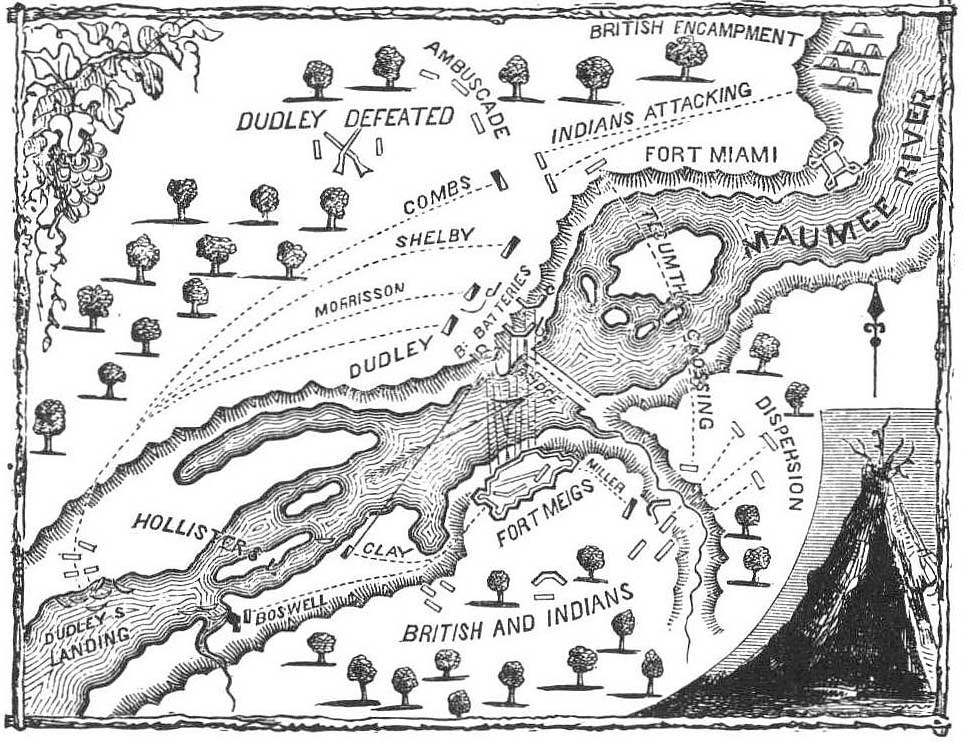Ft Meigs Withstands Siege

In May 1813, forces commanded by General Harrison withstood a British siege on Fort Meig in Ohio. When a relief column arrived, the British and the Indians withdrew. The fort had been the center of American activity in the Maumee River region of Ohio and served as a major obstacle to the British. The siege began on April 12, 1813 with an attack by the British and Indians. Even though he was outnumbered 4 to 1, Harrison refused to surrender and was able to break through the siege a year later.
.
General Harrison constructed Fort Meigs on the rapids of the Maumee River in Ohio on February 2, 1813. It became the focal point of American activity in the region. The fort was constructed with exceptional fortification. For the British, the fort posed a significant impediment to their further advances in the area. On May 1st, the British commenced a siege of the fort. General Harrison was present within the fort during the commencement of the siege. The British demanded the surrender of the American forces. Despite being outnumbered 4 to 1, General Harrison steadfastly refused.
He rallied his troops, urging them to endure the impending siege by proclaiming, “Can the citizens of a free nation contemplate submitting to an army composed of mercenary soldiers, reluctant Canadians, driven to the battlefield by the bayonet and destitute, naked savages?”
The British commenced a bombardment. To their astonishment, their cannonballs proved ineffective against the fort, which was encircled by dirt mounds. Proctor resolved to engage in a protracted siege. However, this type of combat was unfamiliar to the British Indian allies under Tecumseh, and many began to drift away. When a relief column of Kentucky militia managed to reinforce the fort, Proctor opted to withdraw. On May 9th, the siege was consequently lifted.
 >
>